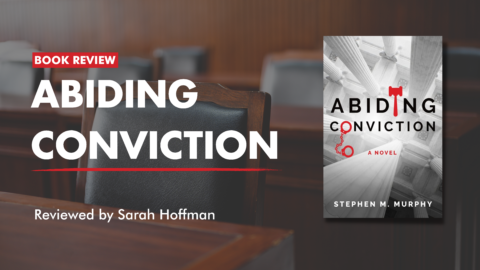
Do you remember the movie Groundhog Day? Bill Murray’s character wakes up each morning to his alarm clock playing “I Got You Babe” and he realizes, with dread, that he is about to re-live February 2, again. Have you ever had that feeling—when you know what’s about to happen: you know you shouldn’t respond with anger, or sarcasm, or by withdrawing from the situation (insert your go-to response to stress here), but you feel powerless to stop yourself?
You’re only human. It happens to all of us. Your typical response is your brain’s well-worn path of least resistance. Unless you have the insight and tools with which to change your default response, you will likely keep doing the same thing, whether it is losing patience with your child for being slow in the morning, or getting anxious when your boss is short with you.
There is hope! You can make new pathways in your brain, resulting in different, more positive and productive responses.
To do so, you have to be aware of your emotions and triggers first.
Is self-awareness not your strong suit? Try noting your emotions in your calendar (emojis are fine) Irritated during a meeting? Elated after a presentation? Write it all down. This will help you identify tricky situations. Then you will be ready to employ some tools to break the Groundhog Day cycle and start creating some new, and healthier, patterns.
Drs. Karen Reivich and Martin Seligman, leaders in positive psychology at the University of Pennsylvania, have designed day-saving interventions called Real-Time Resilience (RTR). These interventions are actions you can take every time you notice yourself about to be triggered by a situation, and allow you to respond thoughtfully, with control. Real-Time Resilience trainings have been adopted and employed by the US Army as part of its Comprehensive Soldier Fitness program since 2009.
What works for soldiers and their families, works for lawyers and law students too. The three RTR interventions we use most with the law students and attorneys we counsel, with our private coaching clients, and with our families, are the ABCs, Thinking Traps, and Detecting Icebergs. A fourth technique, not part of RTR but also effective, is the Mantra.
Know Your ABCs
A stands for Action. B stands for your Belief about the action. C stands for the Consequence—and here’s the key: C results from your beliefs about the action, not the action itself.
Let’s say your colleague fails to say “Good morning” to you (A). You believe your colleague is ignoring you on purpose (B). The consequence is that you think your colleague is upset with you, and you assume it has to do with the draft you turned in last night (C). You could go down a rabbit hole of assumptions, irritation, and stress, right? But if you are equipped with RTR, you would identify your Beliefs and thoughts about the Action, and spare yourself the Consequence. You don’t know why your colleague didn’t say “Good morning.” Your beliefs would cause the resulting emotions (irritation and stress, in this example), not the action itself. Next time you are in a stress-causing situation, take a moment to identify the action, and your belief about the action. Analyze that belief. It probably will not survive close inspection, and you may spare yourself the consequential stress.
Thinking Traps
Thinking traps are counter-productive thinking patterns. Learning to avoid them is another useful RTR technique. Each of us is prone to some thinking traps more than others. Again, self-awareness is key. When you know which thinking patterns are most likely to trap you, you can use mental cues and critical questions to snap out of the trap.
Here are some commons traps and their related RTR interventions:
- Thinking trap: jumping to conclusions (in the above example, assuming your colleague is mad at you for something you did.) RTR: Slow down! Ask yourself: what’s the evidence for my conclusion?
- Thinking trap: mind reading (in the above example, assuming you know why your colleague didn’t say good morning.) RTR: Speak up and ask for information.
- Thinking trap: Me, Me, Me (“It’s all my fault.”) RTR: Stop navel-gazing and look outwards. How did others and/or circumstances contribute to this situation?
- Thinking trap: Them, Them, Them (“It’s all their fault.”) RTR: Look inward. How did you contribute to the situation?
- Thinking trap: Always, Always, Always (“This always happens to me.”) RTR: What’s changeable? What can you control?
You will likely be tempted by a thinking trap today. Catch yourself, and employ one of these RTR interventions.
Detect Icebergs
Have you ever blown up at someone over something that struck others as minor? Given that you are otherwise mentally fit, you were likely triggered by what Dr. Reivich calls an iceberg. An iceberg is made up of core beliefs about how the world operates, and how you operate in it, that fuel out-of-proportion emotions and reactions. Common icebergs include “only weak people ask for help” and “I should succeed at everything I try.” Exploring the iceberg is the best way to lessen its power over you.
Next time you feel yourself getting overly worked up about something, try to identify the iceberg.
Ask yourself: What does that mean to me? What is the worst part of that for me? Assuming that is true, what about that is upsetting to me?
Once you have identified your iceberg, think about whether you still believe in it. Maybe you no longer hold those beliefs, and your reactions are just habitual. If you do still believe in it, is the iceberg causing you to be overly rigid in some situations? Is your iceberg harming you sometimes? What can you do to change your reactions to make these trigger situations go better for yourself and others?
The Mantra
Have you ever been told that you couldn’t do something because you were lacking in some way? Did you the push those negative messages out of your mind? Did you replace those messages with thoughts that helped you reach your goal? If so, you have employed controlled use of attention.
Negative thoughts and emotions tend to settle in our mind, coloring how we look at the world, and holding us back. Shifting our attention to a positive thought pattern moves us forward.
One way to employ controlled use of attention is through the use of a mantra. You may already have one. Do you have a phrase that motivates you, that you find yourself repeating? If you have one that works, great.
If not, here are some mantras to help you get started:
- Don’t play small (your opinions and views count, don’t be afraid to share them).
- There is no such thing as perfection (take the first step, waiting for perfect won’t move you forward).
- Carve your own path (find a way that is yours, not what others have defined).
- Go for It! (if you don’t someone else will. Might as well take the risk).
- It’s never too late (the past is the past, you create your own future).
Incorporating RTR and a mantra can combat the conflict, stress and uncertainty of daily life. By disrupting counterproductive thought patterns, you will re-frame how you view everyday encounters and interactions. Give it a try. You may be surprised and relieved to realize you can break out of old, painful patterns. Goodbye, Groundhog Day!
Fairuz Abdullah is the Director of Public Service Programs and Annabrooke Temple is the Director of Professional Development at UC Hastings College of the Law. They are co-founders of Outlaw Coaching, www.outlawcoaching.com.




